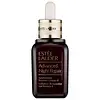What's inside
What's inside
 Key Ingredients
Key Ingredients

 Benefits
Benefits

 Concerns
Concerns

 Ingredients Side-by-side
Ingredients Side-by-side

Water
Skin ConditioningDicaprylyl Carbonate
EmollientGlycerin
HumectantIsononyl Isononanoate
EmollientOctyldodecanol
EmollientTrehalose
HumectantIsostearyl Alcohol
EmollientButylene Glycol Cocoate
EmulsifyingButylene Glycol
HumectantNiacinamide
SmoothingPanthenol
Skin ConditioningPentylene Glycol
Skin ConditioningCalliblepharis Jubata Extract
Skin ProtectingPylaiella Littoralis Extract
Skin ProtectingChlorella Vulgaris Extract
Skin Conditioning1,2-Hexanediol
Skin ConditioningSaccharide Isomerate
HumectantAmmonium Acryloyldimethyltaurate/Vp Copolymer
Carnitine
CleansingMacadamia Integrifolia Seed Oil
Skin ConditioningParfum
MaskingBenzyl Alcohol
PerfumingCaffeine
Skin ConditioningChlorphenesin
AntimicrobialAllantoin
Skin ConditioningSodium Carrageenan
Emulsion StabilisingXanthan Gum
EmulsifyingAcrylates/C10-30 Alkyl Acrylate Crosspolymer
Emulsion StabilisingPanax Ginseng Root Extract
EmollientSodium Hyaluronate
HumectantEthylcellulose
Phytic Acid
Sodium Hydroxide
BufferingLinalool
PerfumingLimonene
PerfumingCitric Acid
BufferingMaris Sal
Skin ConditioningSodium Benzoate
MaskingSodium Citrate
BufferingAlpha-Isomethyl Ionone
PerfumingPotassium Sorbate
PreservativeScutellaria Baicalensis Root Extract
AstringentGeraniol
PerfumingSpirulina Platensis Extract
Skin ProtectingTocopherol
AntioxidantCitral
PerfumingGlycine Soja Oil
EmollientWater, Dicaprylyl Carbonate, Glycerin, Isononyl Isononanoate, Octyldodecanol, Trehalose, Isostearyl Alcohol, Butylene Glycol Cocoate, Butylene Glycol, Niacinamide, Panthenol, Pentylene Glycol, Calliblepharis Jubata Extract, Pylaiella Littoralis Extract, Chlorella Vulgaris Extract, 1,2-Hexanediol, Saccharide Isomerate, Ammonium Acryloyldimethyltaurate/Vp Copolymer, Carnitine, Macadamia Integrifolia Seed Oil, Parfum, Benzyl Alcohol, Caffeine, Chlorphenesin, Allantoin, Sodium Carrageenan, Xanthan Gum, Acrylates/C10-30 Alkyl Acrylate Crosspolymer, Panax Ginseng Root Extract, Sodium Hyaluronate, Ethylcellulose, Phytic Acid, Sodium Hydroxide, Linalool, Limonene, Citric Acid, Maris Sal, Sodium Benzoate, Sodium Citrate, Alpha-Isomethyl Ionone, Potassium Sorbate, Scutellaria Baicalensis Root Extract, Geraniol, Spirulina Platensis Extract, Tocopherol, Citral, Glycine Soja Oil
Water
Skin ConditioningBifida Ferment Lysate
Skin ConditioningMethyl Gluceth-20
HumectantPEG-75
HumectantBis-PEG-18 Methyl Ether Dimethyl Silane
EmollientButylene Glycol
HumectantPropanediol
SolventCola Acuminata Seed Extract
Skin ConditioningHydrolyzed Algin
Pantethine
EmollientCaffeine
Skin ConditioningLecithin
EmollientTripeptide-32
Skin ConditioningEthylhexylglycerin
Skin ConditioningSodium Rna
Skin ConditioningBisabolol
MaskingGlycereth-26
HumectantSqualane
EmollientSodium Hyaluronate
HumectantOleth-3 Phosphate
Caprylyl Glycol
EmollientLactobacillus Ferment
Skin ConditioningOleth-3
EmulsifyingOleth-5
EmulsifyingAnthemis Nobilis Flower Extract
MaskingYeast Extract
Skin ConditioningCholeth-24
EmulsifyingHydrogenated Lecithin
EmulsifyingCeteth-24
CleansingTocopheryl Acetate
AntioxidantEthylhexyl Methoxycinnamate
UV AbsorberHexylene Glycol
EmulsifyingCarbomer
Emulsion StabilisingTriethanolamine
BufferingTrisodium EDTA
BHT
AntioxidantXanthan Gum
EmulsifyingPhenoxyethanol
PreservativeCI 14700
Cosmetic ColorantCI 19140
Cosmetic ColorantWater, Bifida Ferment Lysate, Methyl Gluceth-20, PEG-75, Bis-PEG-18 Methyl Ether Dimethyl Silane, Butylene Glycol, Propanediol, Cola Acuminata Seed Extract, Hydrolyzed Algin, Pantethine, Caffeine, Lecithin, Tripeptide-32, Ethylhexylglycerin, Sodium Rna, Bisabolol, Glycereth-26, Squalane, Sodium Hyaluronate, Oleth-3 Phosphate, Caprylyl Glycol, Lactobacillus Ferment, Oleth-3, Oleth-5, Anthemis Nobilis Flower Extract, Yeast Extract, Choleth-24, Hydrogenated Lecithin, Ceteth-24, Tocopheryl Acetate, Ethylhexyl Methoxycinnamate, Hexylene Glycol, Carbomer, Triethanolamine, Trisodium EDTA, BHT, Xanthan Gum, Phenoxyethanol, CI 14700, CI 19140
 Reviews
Reviews

Ingredients Explained
These ingredients are found in both products.
Ingredients higher up in an ingredient list are typically present in a larger amount.
Butylene Glycol (or BG) is used within cosmetic products for a few different reasons:
Overall, Butylene Glycol is a safe and well-rounded ingredient that works well with other ingredients.
Though this ingredient works well with most skin types, some people with sensitive skin may experience a reaction such as allergic rashes, closed comedones, or itchiness.
Learn more about Butylene GlycolCaffeine is most associated with coffee, tea, and cacao. In skincare, it helps with calming inflammation and is rich in antioxidants.
While caffeine is used to treat cellulite and and dark circles, further studies are needed to prove this. It has been believed to help with these skin conditions due to its ability to dilate blood vessels and increase blood flow.
Some studies are looking into caffeine's ability to protect against UV rays.
Learn more about CaffeineSodium Hyaluronate is hyaluronic acid's salt form. It is commonly derived from the sodium salt of hyaluronic acid.
Like hyaluronic acid, it is great at holding water and acts as a humectant. This makes it a great skin hydrating ingredient.
Sodium Hyaluronate is naturally occurring in our bodies and is mostly found in eye fluid and joints.
These are some other common types of Hyaluronic Acid:
Learn more about Sodium HyaluronateWater. It's the most common cosmetic ingredient of all. You'll usually see it at the top of ingredient lists, meaning that it makes up the largest part of the product.
So why is it so popular? Water most often acts as a solvent - this means that it helps dissolve other ingredients into the formulation.
You'll also recognize water as that liquid we all need to stay alive. If you see this, drink a glass of water. Stay hydrated!
Learn more about WaterXanthan gum is used as a stabilizer and thickener within cosmetic products. It helps give products a sticky, thick feeling - preventing them from being too runny.
On the technical side of things, xanthan gum is a polysaccharide - a combination consisting of multiple sugar molecules bonded together.
Xanthan gum is a pretty common and great ingredient. It is a natural, non-toxic, non-irritating ingredient that is also commonly used in food products.
Learn more about Xanthan Gum